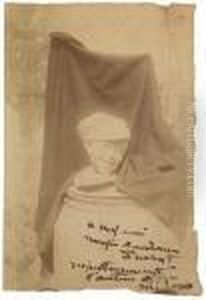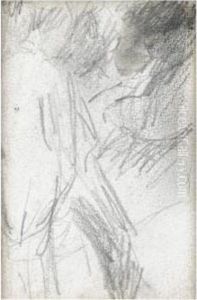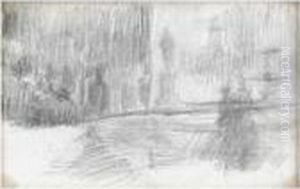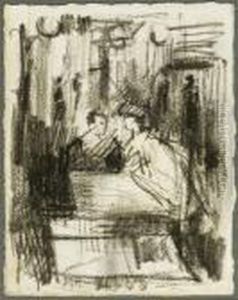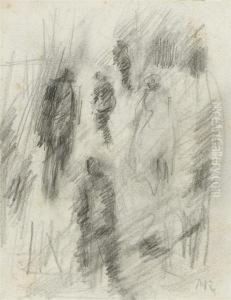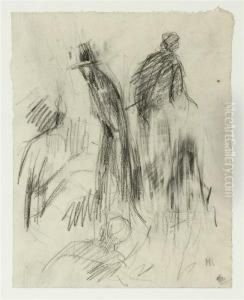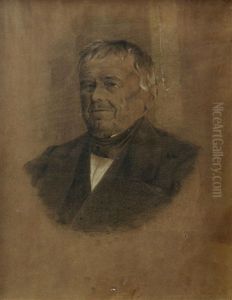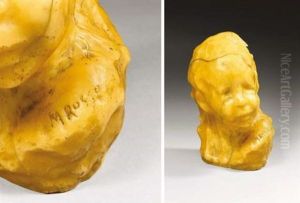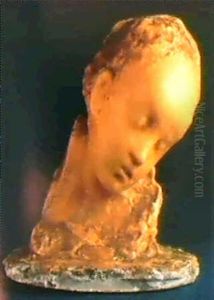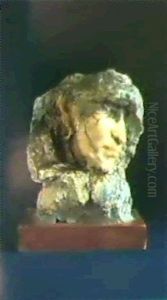Medardo Rosso Paintings
Medardo Rosso was an Italian sculptor who is often associated with the development of modern sculpture. He was born on June 21, 1858, in Turin, Italy, but spent much of his life in Paris, France. Rosso was a contemporary of Auguste Rodin, although his work is distinct for its radical approach to form and its focus on the effects of light and atmosphere on the surface of sculptures.
Rosso's early life was marked by poverty and hardship. His family moved to Milan when he was a child, and he began his artistic training at the Accademia di Belle Arti di Brera in Milan. However, he left the academy without completing his studies, dissatisfied with the traditional teaching methods. Choosing to work independently, Rosso began experimenting with different materials and methods, which would become a hallmark of his artistic career.
In the 1880s, Rosso began to establish his reputation as a sculptor. His work during this period was characterized by a focus on naturalism and an interest in capturing fleeting impressions, akin to the goals of the Impressionist painters. Rosso's sculptures often depicted ordinary people, such as children, the elderly, and the working class. He was particularly adept at using wax as a medium, which allowed him to create delicate, translucent surfaces that interacted with light in innovative ways.
Rosso's innovative approach to sculpture was seen as a departure from the traditional, solid forms and idealized subjects preferred by the academies. He sought to capture moments in time, emphasizing the transient effects of light and shadow rather than the solidity of form. This led to a body of work that often appeared unfinished or ephemeral, challenging the viewer's perception of sculpture as a medium of permanence.
In 1889, Rosso moved to Paris, which was then the center of the art world. He became involved in the vibrant artistic community of the city, where he exhibited his works and engaged with other artists. Despite his association with the Parisian avant-garde, Rosso's work was often met with mixed reactions. He struggled for recognition and was frequently embroiled in controversies, particularly with Rodin, whom he accused of imitating his style.
Throughout his career, Rosso remained an experimental artist, continually pushing the boundaries of his medium. His approach to sculpture would influence later generations of artists, including those associated with Futurism and Abstract Expressionism. Although he never achieved widespread fame during his lifetime, Rosso's innovative techniques and his focus on the interplay of light and form have earned him a lasting legacy in the history of sculpture.
Medardo Rosso died on March 31, 1928, in Milan. Today, his work is recognized for its contribution to the development of modern sculpture and is held in high regard by art historians and collectors. His sculptures can be found in major museums around the world, testifying to the enduring impact of his artistic vision.
